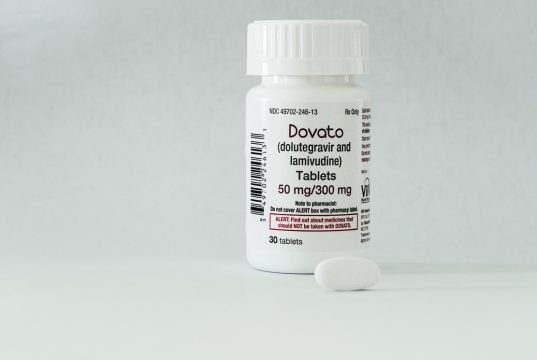Advertisment
ASCO 2013 – Although better defined, role of PSA in prostate cancer screening remains controversial

In recent years, there has been an adjustment in the scientific thinking about the utility of screening men for prostate cancer using prostate-specific antigen (PSA). That shift has been slow to occur in daily practice as a result, in part, of a feeling among the health care community that there is still not a clear answer to the question: Which, if any, men should be screened for prostate cancer? Thoroughly discussing this question was the impetus behind Friday’s Extended Education Session “Prostate Cancer Screening: Past, Present and Future.”
“This is a real decision that has to be made by physicians and patients every day,” Ethan M. Basch, MD, MSc, of The University of North Carolina at Chapel Hill, said. “It is not necessarily clear by looking at various recommendations or trying to read the studies what the right answer is.”
PSA came into use in the 1980s, first as a method of monitoring recurrent disease, and later as a way to screen for prostate cancer. After the introduction, prostate cancer diagnosis sharply increased and subsequently, mortality began to decline.
“However, the extent of PSA’s impact on the mortality decline has remained highly debated to this day,” Dr. Basch, who served as Chair of the session, said. This debate leaves the fate of PSA screening up in the air, if one assumes that the goal of screening is to reduce overall and disease-specific death and disability.
Recently, ASCO, the American Urological Association, the American College of Physicians, and the U.S. Preventive Services Task Force have released revised prostate cancer screening guidelines that recommend reducing or completely eliminating the use of PSA screening for prostate cancer. Dr. Basch explained that the purpose of the session was to allow attendees to hear a number of different perspectives about the current use of PSA, including both pros and cons of screening, and about emerging tests that may supplement or replace PSA.
More selective PSA screening
Peter T. Scardino, MD, of Memorial Sloan-Kettering Cancer Center, noted how far the area of prostate cancer detection has come compared with the era before PSA screening when more men presented with advanced and difficult-to-cure cancer. However, he acknowledged that some of the recent criticism of the biomarker has been appropriate. For example, in recent years there has been too much screening of elderly men with short life expectancies, the criteria for biopsy have been too liberal, and too many low-risk, low-stage cancers are being treated aggressively, causing more harm than good, he said.
“However, I wouldn’t come away from this panel thinking that PSA only does harm and does no good,” Dr. Scardino said. “I think the harm can be managed and the good should be retained.”
He recommended that men undergo risk-adjusted screening by age and PSA level to reduce false-positive results starting at age 45; that false positives be further reduced by adding additional markers such as the 4K panel that includes total PSA, free PSA, intact PSA, and human kallikrein 2. He also noted that active surveillance is more widely recommended for low-risk cancers and that more treatment is done by high-volume physicians and centers, reducing the harm of necessary therapies.
“Young men with a PSA value of below 1 don’t need to be tested for another 5 years or until age 50 or 60, and if men age 60 have a PSA below 1 than there is no need for further screening in their lifetime,” Dr. Scardino said in an interview with ASCO Daily News. “The answer is to screen in a smarter way.”
Recommendations against PSA
In contrast, Timothy J. Wilt, MD, MPH, of the University of Minnesota and Minneapolis VA Health Care System, thinks that the smarter way to screen for prostate cancer is to not screen with PSA at all.
“New science clearly shows that men can make a wise health care choice by choosing against the PSA test, and physicians can provide high-quality, high-value, cost-conscience care by recommending against it,” Dr. Wilt told ASCO Daily News, explaining that the benefit of testing does not exceed the harm of testing and subsequent downstream evaluation and treatment.
Gone are the days of simple screening messages: “Get tested. Get treated. It could save your life.” The message that physicians must communicate to patients is more complicated now; however, according to Dr. Wilt, patients expect their physicians to provide counsel with what they believe is the appropriate science to guide decisions.
When counseling his patients, Dr. Wilt explains that PSA is unlikely to prevent death from prostate cancer, that an elevated PSA typically leads to further, possibly unnecessary, testing, and that if cancer is found, the decision to undergo or delay treatment is often difficult. If patients still desire to undergo PSA testing, the threshold for abnormal PSA levels should be increased and the testing interval should be widened to decrease overdiagnosis, overtreatment, and diagnostic treatment harms.
Studies examining changes in quality of life, conducted by Harry J. de Koning, MD, PhD, of Erasmus Medical Center, the Netherlands, and colleagues, indicate that common side effects of treatment, such as incontinence and erectile dysfunction, have a significant effect on the overall benefit of PSA screening. Looking at data from the European Prostate Cancer Screening Trial, if screening men age 55 to 69 at 1-year intervals resulted in 72.7 life years gained per 1,000 men, an adjustment for quality of life in years would subtract 16.7 life years.
“To some extent PSA testing is promising, but it is crucial to quantify unfavorable side effects,” Dr. de Koning said. “It is true that the benefits are probably diminished by about 20% when you take into account quality of life.”
Alternatives to PSA
The use of PSA as a diagnostic biomarker clearly has its challenges, but currently, it remains the best serum-based marker for diagnosis of prostate cancer, according to Phillip G. Febbo, MD, of the University of California, San Francisco. After the FDA approved PSA as a screening test in 1994, it took about 15 years before prospective, randomized controlled studies had mature data with endpoints that could provide insight to the actual value of PSA.
“The bottom line is given the natural history of localized prostate cancer, any biomarker to improve on PSA faces a significant challenge with respect to prospective trials,” Dr. Febbo said.
Among the best candidates being researched are derivatives of PSA, such as total PSA or free PSA, and a host of additional biomarkers examined in preliminary or single-institution studies. However, many of the markers that have shown initial promise often fail to come to market because of inadequate analytic and clinical validation.
“If the discussion today is about overdiagnosis of indolent disease, I don’t think we need a better diagnostic test as far as finding the disease, we need a better diagnostic test that can find clinically important disease,” Dr. Febbo said.
There are two tests being used to help reduce the need for repeat biopsy after initial elevated PSA: urine PCA3, a noncoding mRNA, and tissue GSTP1 promoter methylation (Confirm MDx). PCA3 is now commercially available. Research has shown its sensitivity to be 67% with a negative predictive value of 90%. It has also been found to be superior to PSA in predicting prostate cancer in men with elevated PSA and a previous negative biopsy; however, its FDA indication is only for that narrow group of patients.
Researchers have also known for years that GSTP1 promoter methylation is one of the earliest molecular events in prostate cancer. In addition, because it is found in more than 90% of prostate cancers, it has been evaluated as a potential diagnostic. A tissue-based assay is available, working off the field effect of prostate cancer. If a patient with an elevated PSA has a negative biopsy, the tissue can be submitted for Confirm MDx; if methylation is not observed, patients return to PSA screening.
Clear demonstration of benefit or harm required
Whatever step comes next in screening for prostate cancer (or any other cancer), Dr. Basch emphasized the need for an improved regulatory framework that requires a demonstration of clinical benefits or an assessment of harms for screening tests. Although increased scrutiny could delay tests getting to market, or possibly increase the cost of development, clear evidence is necessary to avoid another “PSA situation” in which, more than 30 years after its discovery, the benefits of PSA are still unclear, whereas its substantial harms and unnecessary costs have been clearly established.
“It will be up to payers, as well as guideline developers, providers, and patient groups to insist on a compelling level of meaningful evidence prior to widespread adoption of new screening tests,” Dr. Basch said.





